As champions of innovation in end-user computing (EUC), Storage Review takes great pride in serving as an official media sponsor for EUC World Amplify 2025. The following is a recap of the first day of the second annual EUC World Amplify conference taking place at the McNamara Alumni Center on the campus of the University of Minnesota.

We arrived early Monday so we could enjoy a delicious “Juicy Lucy” hamburger from Matt’s Bar before checking into the Graduate Hotel.
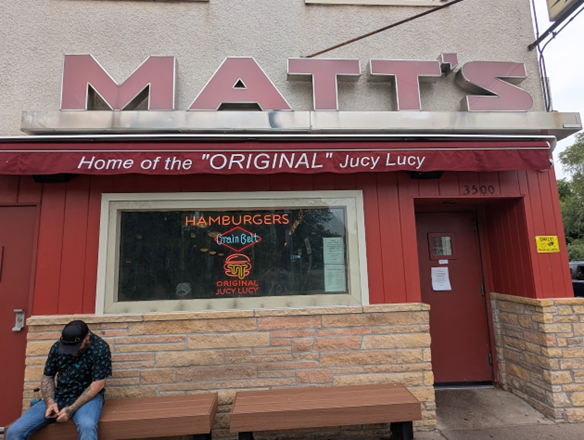
We don’t often mention our accommodations, but the Graduate Hotel truly deserves recognition for its unique approach to reflecting the university’s spirit. For instance, the keycards are designed to resemble student IDs of notable alums. Ours featured Prince (Class of 1980) and Mary Tyler Moore (Class of 1958). Additionally, our table lamp was styled after “Little Red Corvette,” a hit song by Prince, and there was a picture of Loni Anderson, a native of St. Paul, adorning the wall. Kudos to the hotel for such thoughtful details!
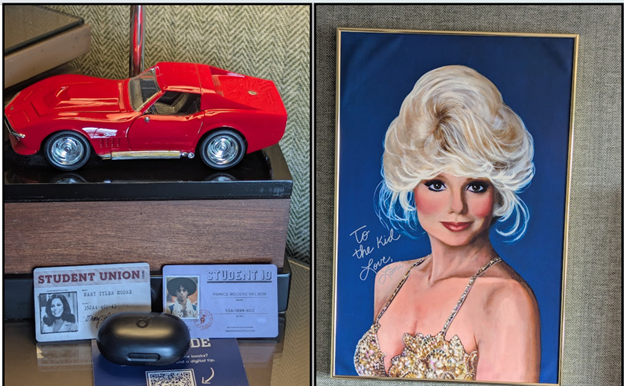
We attended the Monday night reception where we caught up with friends and acquaintances.
On Tuesday, we attend the opening keynotes, followed by a full day of sessions.
Session Recap
Following a few opening remarks, there was an expert panel discussion focused on the evolving landscape of user computing (UC) and virtualization, moderated by Stephen Wagner. It was fascinating in light of the significant industry shifts, such as Broadcom’s acquisition of VMware.
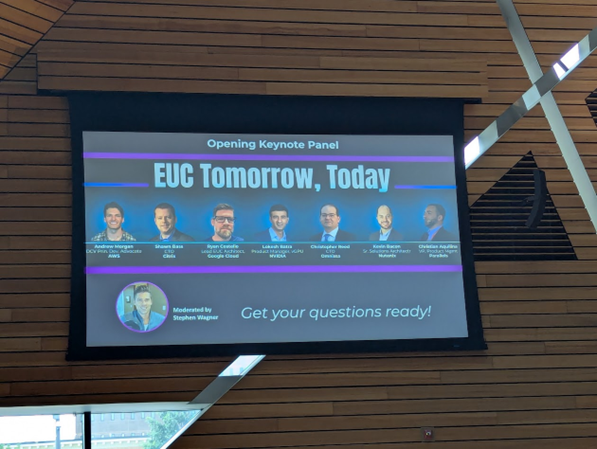
The conversation highlighted the growing need for platform neutrality and flexibility. Companies are exploring various solutions, including new partnerships between Omnissa and Nutanix, cloud-based managed services, and alternative hypervisors such as Citrix XenServer and Nutanix AHV. These efforts aim to optimize costs and enhance user experience. A key theme addressed the shift from traditional on-premise infrastructure towards hybrid and cloud models. The demand for simplified operations, improved user experience, and the transformative impact of AI on future computing interfaces drives this transition.
The following discussion focused on the convergence of Virtual Desktop Infrastructure (VDI) and Artificial Intelligence (AI) to create more secure, efficient, and innovative computing environments. Key themes include using VDI to protect intellectual property for developers and third-party contractors, especially during AI development cycles. The conversation also highlighted the integration of AI into product offerings, such as enhancing graphics with reduced bandwidth, implementing noise cancellation, and creating AI co-pilots for system administration and support.
The panel also covered the emerging field of computer vision agents for advanced automation, which is like “RPA on steroids.” Additionally, the panel discussed the use of AI for immediate protection against attacks and intelligent model routing in AI gateways. The overall message stresses the importance of a pragmatic, problem-solving approach to AI adoption, advising users and partners to clearly define desired outcomes rather than implementing AI for its own sake. It also urges them to embrace this disruption as a new frontier in technology.
Liquidware followed the panel discussions, providing a company overview and detailing its products with a focus on application delivery.
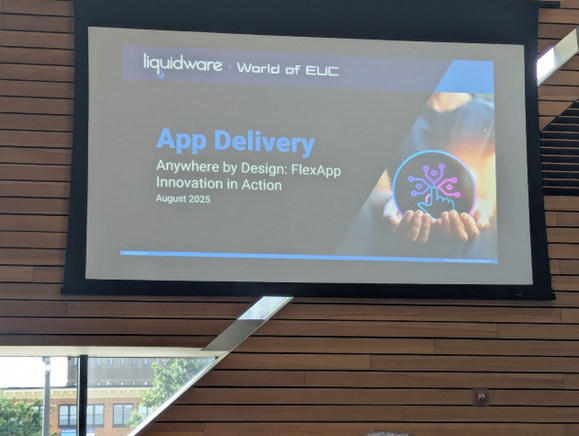
As one of the original sponsors of EUC World, Liquidware stressed its commitment to universal workspace management, supporting all desktop environments across physical, virtual, and cloud platforms, including Linux endpoints. Liquidware specializes in providing decision support through solutions like Stratosphere UX, which offers in-depth metrics for Windows workspaces and Linux endpoints, and their real-time remediation tool, CommandCTRL. They also provide ProfileUnity for comprehensive user environment management, acting as a powerful alternative to Group Policy Preferences in today’s modern IT landscapes. FlexApp was highlighted as a solution for attached applications that are not installed but appear as native applications, offering benefits like offline access and OATH integration.
They wrapped up their presentation by introducing their community-driven utilities designed to extend the functionality of their core products, including automation for application packaging updates and validation testing for FlexApp packages. The presentation was well-received and focused on the technology rather than doing a sales pitch for their portfolio of products.
Jason Mafera, Field CTO from IGEL, was up next.
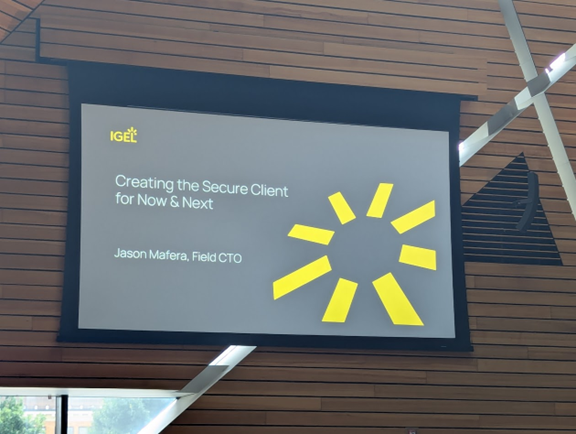
Mafera explained IGEL’s transition from primarily a hardware company to a software-focused organization, specifically highlighting their endpoint operating system. They emphasized that this system enhances security against ransomware and malware through a preventative approach. This includes a read-only operating system and modular application deployment, both of which help to reduce the attack surface. Additionally, IGEL highlights cost reduction by extending the lifecycle of hardware and simplifying management processes. The company also showcases its ecosystem of partners to provide comprehensive enterprise solutions.
IGEL wrapped up their presentation by discussing business continuity features, including dual-boot capabilities and a new client-side hypervisor. These features are designed to enable the quick restoration of operations after a cyberattack. They also conducted a live demonstration that illustrated the recovery process from a compromised Windows environment.
Benny Tritsch, known for his work with EUC Score, concluded the presentations. He delivered complex technical information in a very understandable way.
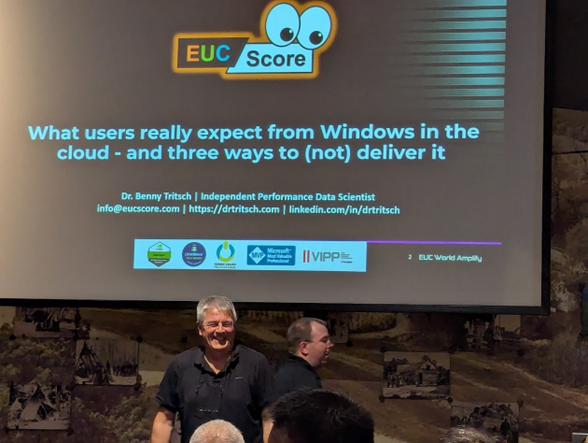
Tritsch emphasized the importance of adopting a user-centric approach in cloud-based Windows environments, pointing out that user satisfaction is directly linked to successful deployments. He noted that it is common to blame network or storage issues for poor performance. Instead, he advocates for proactive testing and optimization to enhance end-user satisfaction.
A key component of this approach is the software and a sophisticated testing lab that simulates various user activities and network conditions. This setup allows for the precise identification of issues such as application unresponsiveness, video distortion, and screen refresh delays. The ultimate goal is to ensure a seamless and artifact-free user experience, regardless of the underlying infrastructure. This is achieved by focusing on metrics that genuinely impact the end user, rather than solely relying on technical specifications.
At the end of the sessions, we attended an event at Top Golf, sponsored by ControlUp, Google, IGEL, and Tricerat. There, we enjoyed good food and beverages, watched others golf virtually, and caught up with colleagues about the day’s activities.
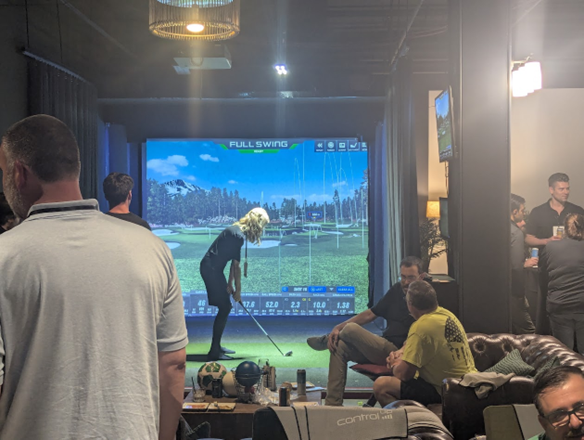
We look forward to Wednesday’s sessions and panels!




 Amazon
Amazon